After Zamora we drove four hours south to Trujillo.
We’ve visited Trujillo at least twice before (we think maybe three times, but we’re old: our memories aren’t what they used to be). Now, most people would look at Trujillo and give it an afternoon, at most. We understand that, but Trujillo is a perfect example of an old Spanish town, in a region that is harsh; for some reason this place captivates us.
Trujillo is in the region of Extremadura, the western-most area of Spain. The word “extremadura” comes from Latin and means, essentially, “the hard border.” That’s an accurate name: this is a pretty harsh area. Few crops are grown here; we see cattle, sheep, horses, hogs and goats here. The harshness of this area had a huge effect on South and Central America: Francisco Pizarro, who led the expeditions that conquered Peru in the 1500s, was born and raised in Trujillo. Hernan Cortez, conquerer of Mexico came from near here, and his half-brother, who was in Cortez’s army, was born in Trujillo. Many of the conquistadores, as we have come to call them, were from Extremadura. There was nothing here for them, so they went off to conquer other lands.
We first came to Trujillo because I’d read in a guide book that it is a “perfect set piece of a rural Spanish town.” Yes, but…this is a living set piece and that makes it really interesting to us. Some pictures are called for, methinks…
Trujillo sits on top of a hill, which means views of the countryside for miles around. There isn’t much to see…

I know panorama pictures don’t work well in a blog format, but here’s one of the countryside surrounding Trujillo. Harsh.

An overview of Trujillo from the castillo above the town. The big building is the parador where we stayed.
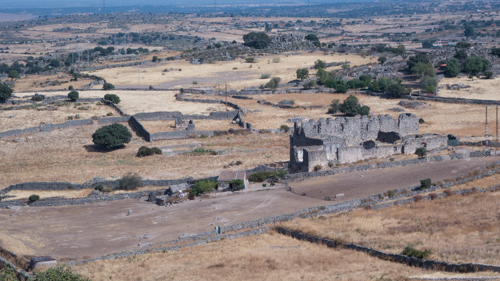
Those are stone walls you see. There are miles and miles of stone walls here. The stones came from trying to clear the fields enough to make something grow on them to feed livestock. And I can guarantee that those stones weren’t dug up or carried to the fences by some tractor; talk about back-breaking work!
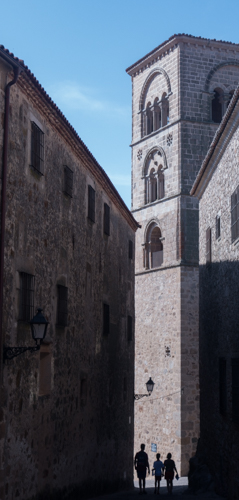 |
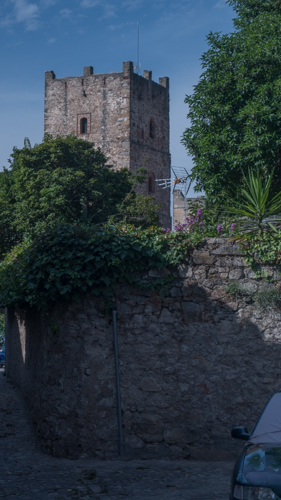 |
There’s a funny story about the statue of “Pizarro” below. The sculptor, an American named Charles Rumsey, did this statue to honor Hernan Cortez, conqueror of Mexico. Then he went to Mexico to tell them he had this great statue of Cortez he wanted to give to them. Well, Cortez is not exactly a hero in Mexico, given that he conquered the country and essentially enslaved the population and stole all its treasures. So Mexico declined his offer. Then Rumsey came to Extremadura and said he had this great statue of Pizarro, who was born here, and he wanted to give it to Trujillo. Trujillo was happy to take it to honor its most famous native son.

Trujillo has a great Plaza Mayor, with restaurants and bars and lots of folks just being there. There is always activity here.
Big Goings-on in the Plaza Mayor
This was a big week for Trujillo, in that the week was a festival associated with the church that sits in the Plaza Mayor. Every night there was a mass in the evening, and every night there was a comedy/puppet show for the kids. Now we couldn’t figure out how they were related, but here are the kids ready for the show to start (this picture was taken about 10 o’clock at night):
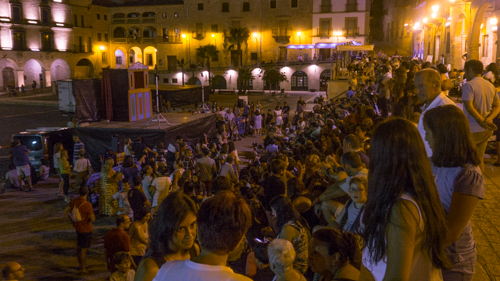
The service in the church ended at 10:15 and about 10 seconds later, with a burst of noise and music, the kids’ show began, with kids cheering and yelling and having a great time. The second night many kids came in costumes and the MC called them on stage, said a sentence or two to them, got them to make crazy movements or expressions and gave each a certificate of some sort as they left the stage. It was great fun to watch.
We’re staying at a Parador again. This one has a new wing and a wing in a 17th century convent. Proof that it was a convent: a torno, which is a turntable on which women could place an unwanted baby or a baby for which they simply couldn’t provide, and then turn the torno to send the baby into the convent where the nuns would care for it. Most convents (and convent buildings converted to another use) still have a torno, and most have maintained them as a sign of respect for the past.
In fact, tornos now have another use in many active convents. These convents are known for making and selling dulces: sweets, usually cookies and small cakes. When you go to buy dulces you stand at the torno, press a button to summon a nun, and wait. The nun talks to you from behind the torno, takes your order, and tells you the amount it will cost. You put your money on the torno and turn it. Your money goes inside, the dulces come to you. You never see the nun, which is what they want, as they have taken a vow to remain out of public view.
I think that’s it for Trujillo. Next is a post about an interesting and enjoyable daytrip we took from here.


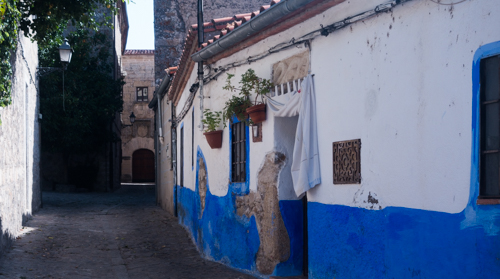
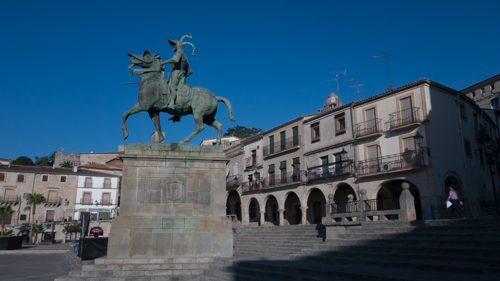
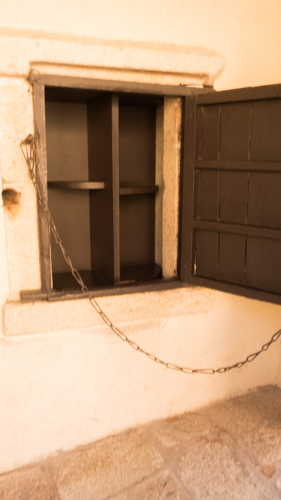
Great post, John. I think we need to return to Spain….